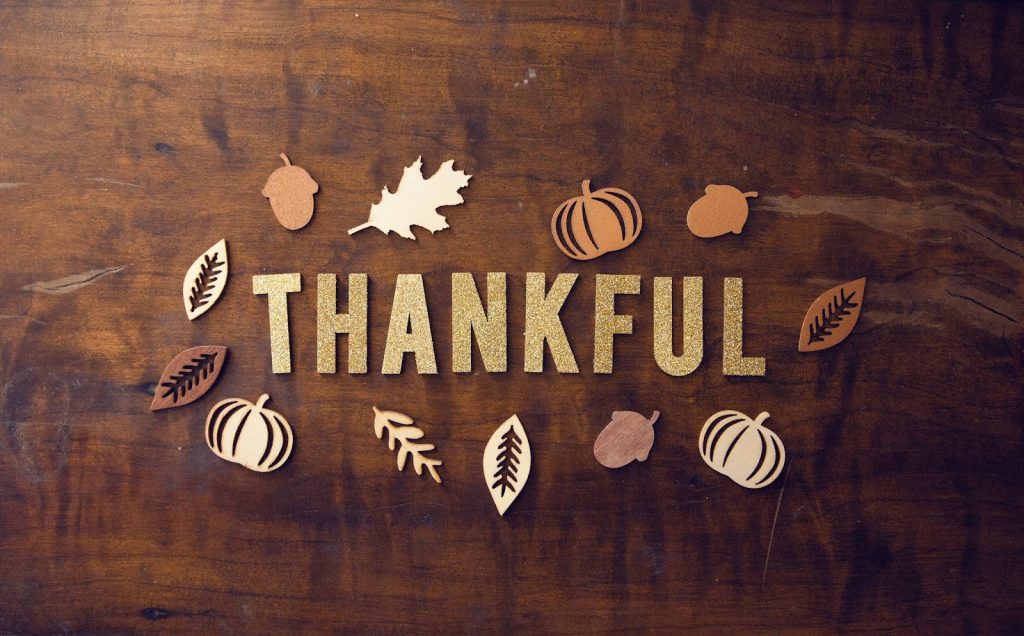Chjêm-Blog
4 Cách Để Hiểu Thấu Sự Biết Ơn. Giúp chúng ta hạnh phúc
Biết ơn ai đó luôn là điều tốt và hiểu thấu cảm thấy trải lòng biết ơn người đã giúp đỡ mình. Sự biết ơn cũng cần phải tập luyện đó là quá trình. Không phải ai cũng hiểu và có lòng biết ơn. Đó là dạng kinh nghiệm xúc cảm, tính cách và thực hành là sự kết hợp để dùng để cải thiện con người sức khỏe và nhân cách. Theo nghiên cứ Tiến sĩ tâm thần học Alex Kord, những người có lòng biết ơn thì lại có chỉ số sức khỏe tinh thần rất cao.
Năm 2010 tap chí Clinical Psychology Review cho biết những người có lòng ơn nghĩa thì ít bị trầm cảm, suy nhược và được nhiều sự hỗ trợ từ xã hội hơn những người khác. Đem lại rất nhiều lợi ích cho sức khỏe tinh thần.
Năm 2017 tạp chí Basic and Applied Social Psychology đăng một loạt bài từ 38 nghiên cứu khoa học, các nhà khoa học đã nghiên cứu nhóm người thực hành lòng biết ơn và một số nhóm người khác. Họ nhận thấy kết quả rất khác biệt, từ tinh thần và hạnh phúc, sự hài lòng, cảm xúc thư thái, trầm cảm, suy nghĩ tích cực, lạc quan, chất lượng các mối quan hệ. Nghiên cứu qua cơ thể chứng minh giúp làm lành vết thương nhanh hơn.
Nhưng thực tế nói dễ hơn làm khi bạn đang trong trạng thái mệt mỏi, tâm trạng lo lắng không ổn định. ” Khi bạn trong trạng thái ảm đạm u tối, những giây phút cảm giác biết ơn ai đó lại tích cực tạo ra sự cân bằng cuộc sống ” theo nhà tâm lý bọc Judy Moskowitz giáo sư tâm lý xã hội tại Northwestern University Feinberg School of Medicine.
Mục Lục
1.Hãy Nghĩ Về Điều Đó Hằng Ngày
Cách tốt nhất để hiểu là hãy suy nghĩ về nó, nó sẽ phản chiếu lại từng khía cạnh trong cuộc sống của bạn. Từ việc thức dậy vào buổi sáng cho đến lúc ngủ, các hoạt động hằng ngày hãy nghĩ về lòng biết ơn. Nó sẽ trở thành thói quen của chúng ta.
2. Giữ Vững Lòng Biết Ơn
Theo kết quả của hầu hết các nghiên cứu thì “Nó giúp bạn tập trung chú ý quan sát các sự việc xung quanh, đó là một phần trong cuộc sống của bạn”. Mỗi chúng ta là phản chiếu lại những gì chúng ta làm, cuộc sống xung quanh bản thân như câu “tâm sinh tướng” an nhiên sẽ giúp chúng ta cảm thấy vui vẻ giúp chúng ta trẻ khoe xinh.
Hãy luôn giữ vững biến mình thành một nhân chứng sống cho người khác thấy điều mình đã làm. Hướng mọi người xung quanh làm theo điều tốt đẹp.
3. Nói Lời cảm Ơn, Hành Động, Diễn Giải
Sự kết nối với mọi người bắt đầu từ một câu nói đơn giản” cảm ơn” với những điều nhỏ nhất theo những cách khác nhau. Từ bạn bè, người thân đồng nghiệp, gia đình, hay dù chỉ là người lạ qua đường.
Lời cảm ơn quý giá nhất là làm cho người giúp đỡ lẫn người mang ơn đều cảm thấy hài lòng mãn nguyện, không nhất thiết là tiền bạc được nhận lại. Ba yếu tố thể hiện lòng biết ơn quý giá
- Người khác đã làm gì cho mình
- Thật lòng biết ơn, trân trọng sự cố gắng nhiệt thành người giúp đỡ mình
- Bạn đã được giúp đỡ như thế nào
Từ đó chúng ta sẽ có cảm giác thư thái, tinh thần tốt hơn, đặc biệt là giá trị đạo đức chúng ta có. Người khác, mọi người xung quanh đánh giá chúng ta rất cao, sẽ nhận được nhiều sự giúp đỡ hơn. Và chúng ta sẽ mở rộng tấm lòng giúp đỡ người khác.
4. Trải Lòng Cách Nhẹ Nhàng
Thực hành sự biết ơn không phải là cảm giác tự nhiên. Cần cố gắng và thúc đẩy bản thân hiểu rõ, nhiều người cảm thấy khó chịu hoặc ” ăn cháo đá bát” sẽ khó mà cảm nhận được cần phải có thời gian để trải qua.
Biết ơn không nhất thiết phải thể hiện qua bên ngoài phô trương và thể hiện mình. Cảm nhận rồi giúp đỡ người khác khi họ khó khăn thì ta đã trải lòng một cách âm thầm.
Dịch và cải biên: chjem.com
Sources: https://www.self.com/story/gratitude-practice-tips -Robert Zaleski
You probably have a general inkling that gratitude is good—and that having a gratitude practice might be good for you. Maybe you’ve even considered starting a gratitude journal. What you’re likely not as familiar with is the impressive body of research suggesting gratitude—as an emotional experience, a character trait, and a practice—is associated with a wide array of improvements in mental health and well-being. Research shows that people who already experience overall higher levels of gratitude in their lives—as a character trait or lens they see world through—tend to score higher on various measures of mental health, neuroscientist, writer, and coach Alex Korb, Ph.D., tells SELF.
For instance, a 2010 meta-review published in Clinical Psychology Review found that people who have higher levels of trait gratitude are also likely to experience less depression, greater well-being, and more social support, among other things. Importantly, there is also research suggesting that gratitude practices can lead to real, measurable benefits for our mental health.
A 2017 series of meta-analyses published in Basic and Applied Social Psychology looked at 38 gratitude intervention studies, where researchers have some number of people regularly practice gratitude in some form (like journaling) and compare them to people in control groups (who are assigned to no intervention or a neutral one, like journaling about daily activities). They found that the people who practiced gratitude had “evident differences” in many self-reported measures of mental health and well-being, like happiness, life satisfaction, grateful mood, grateful disposition, positive affect, depression, optimism, and quality of relationships.
Plus, an emerging body of research demonstrates that gratitude (as a trait and a practice) may be particularly helpful for people who have experienced serious traumas, like natural disasters and combat—suggesting that now might be a particularly ripe time for incorporating more gratitude into your life. (For a detailed review of these studies and what else the research tells us about the healing powers of gratitude, check out this piece. )
Knowing that science supports the idea that gratitude is good for us is one thing. But let’s be real: Sometimes actually integrating the practices we know are good for us into our lives is easier said than done, especially when you’re in a low-energy or high-anxiety place. (Which, hello, is right now!) “The message that I try to get out though is that even when things look really bleak, it is possible to have moments of positive emotion like gratitude that can help sustain you and help you cope better with whatever you’re dealing with,” social psychologist Judy Moskowitz, Ph.D., M.P.H., professor of medical social sciences at the Northwestern University Feinberg School of Medicine, director of the Osher Center for Integrative Medicine at Northwestern, and president of the International Positive Psychology Association, tells SELF.
The really the nice thing about gratitude is that it’s incredibly low-effort, and the barrier to entry is nonexistent. There’s no special technique to learn and no serious time investment. “Cultivating gratitude can start tomorrow,” Robin Stern, Ph.D., the cofounder and associate director for the Yale Center for Emotional Intelligence and an associate research scientist at the Child Study Center at Yale, tells SELF.
Try one or more of the following practices for a few weeks, and see how it makes you feel.
1. Start by just thinking about it once a day
“Take some time every day, a few moments, to reflect on what you’re grateful for,” Moskowitz recommends. The easiest way to build this into your day? Reflect while you’re doing a chore or routine that you do every day. Making your bed in the morning, unloading the dishwasher, washing your face at night—these little activities can double as the time you intentionally savor the things you are grateful for. That way it becomes habitual and doesn’t require any rearranging of your day.
A minimum of three things is a great place to start, Moskowitz says, and “they don’t have to be brand new every day.” You might use ones like your health, your spouse, or your pet over and over again. They can also be seemingly trivial, Moskowitz adds—as small and simple as the fact that the sun is out or your coffee tastes good.
2. Keep a gratitude journal
As the most-studied intervention, keeping a gratitude journal is a great idea, Korb says. “This is just directing your attention to three or five things that happened that day, or parts of your life that you’re grateful for, and writing them down.”
It’s better to take a few moments to really reflect on these little gifts, cognitive psychologist Emiliana Simon-Thomas, Ph.D., science director of the Greater Good Science Center at UC Berkeley, tells SELF, instead of rushing to jot them down like a grocery list. She also recommends including people, or considering how a person might be the source or reason behind one of the things on your list.
You can do it a couple of times a week or every day, Stern says. Try keeping a journal next to your bed to use in the morning or at night. While you can definitely keep it simple, if you do want to get more serious about gratitude journaling, the Greater Good Science Center has more tips here.
3. Tell people thank you, verbally or in writing
This one is a great addition to reflection or journaling because it brings in the social connectedness element of gratitude. “Start saying thank you to people more often, and in a particular way,” Simon-Thomas says. The recipient can be anyone—a best friend, a spouse, a barista, a coworker, a sibling—but it’s more than saying “Thanks!”
The most effective expressions of gratitude—the ones that make both the thanker and the thanked feel good—hit three things, Simon-Thomas says. Here are the three main elements of a super-effective expression of gratitude:
- Describe what the person did
- Acknowledge the effort that the person put in, including if they sacrificed or forewent something
- Describe how it benefited you
“When we do this more in-depth, reflective, and specific-to-the-person kind of gratitude expression, the feelings tend to be much stronger,” Simon-Thomas says. “We feel more warm, [and] the other person feels more recognized and validated. And that sense of bonding, of interdependence and mutual support, is more robust when we…deliberately highlight those elements.”
4. Keep at it—it gets easier
Know that practicing gratitude may not feel particularly natural or good at first—it may feel a little forced or effortful. “Some people, especially when they start [practicing gratitude], it doesn’t necessarily feel that good in the moment,” Korb adds.
But it’s totally okay if it feels weird or you’re not welling up with warm and fuzzy feelings. Korb likens it to getting in shape with physical exercise: It might not make you feel good in the moment, but that doesn’t mean you’re not accruing benefits in the background that become more apparent over time. And, like exercise, it gets easier. “Over time it doesn’t continue to take as much effort,” Korb says.
Even as a longtime practitioner, “some days it’s easier than others,” Mostkowitz says. “You might feel sometimes like you have to dig really deep.” It’s all part of the practice. As Simon-Thomas puts it, “We have the opportunity with those little moments in daily life to either relate to them in a grateful way or not.”

